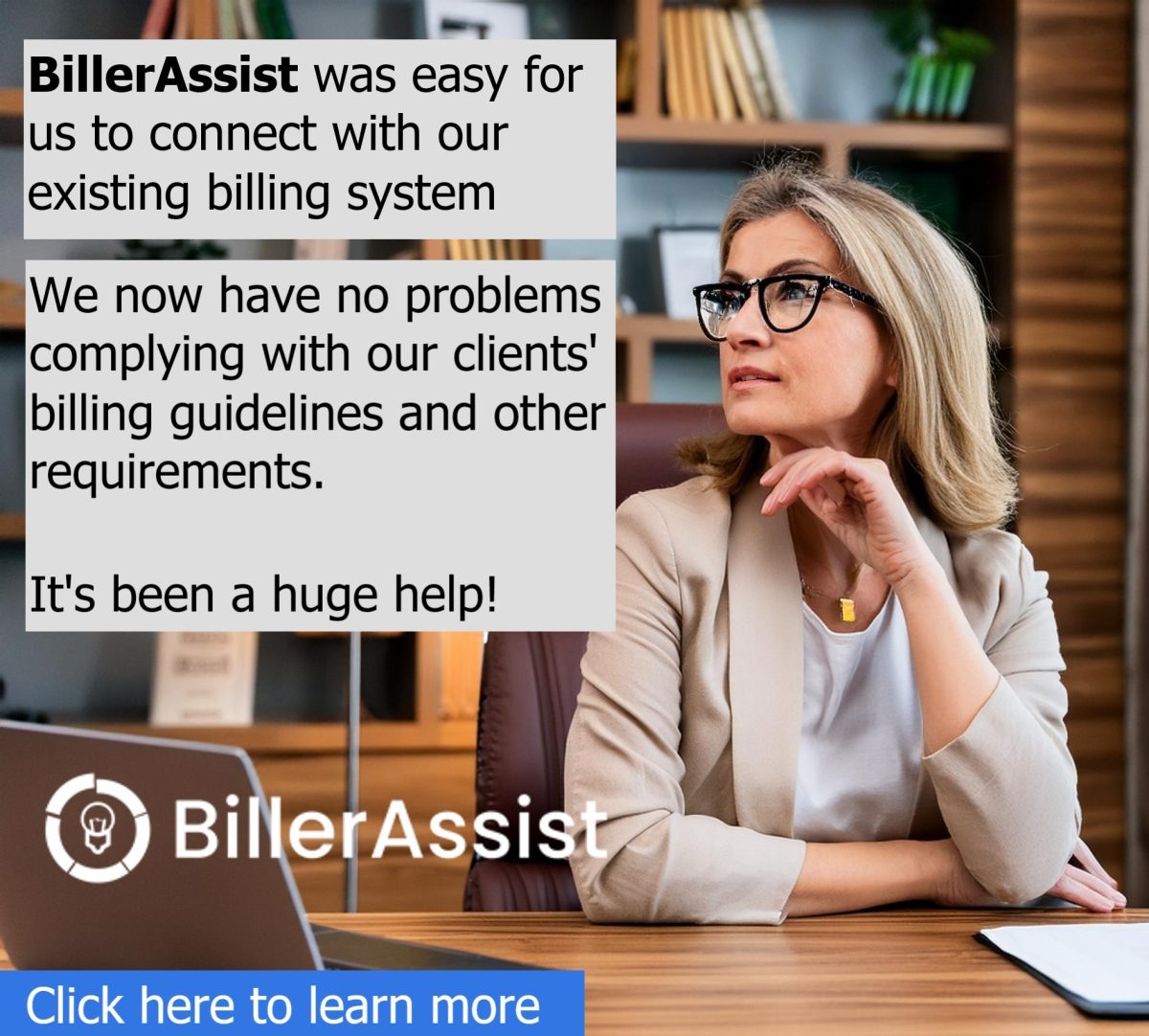Adopting New Tech? Streamline Your Change Management
Despite the disruptions often involved in implementing new legal technology, many law firms have discovered that the temporary inconveniences prove valuable in the long-term.
For example, in its recent “State of Legal Technology” report, Thomson Reuters noted how several proactive law firms are finding a successful path to significant increases in profits by investing in new legal technology solutions.
However, before spending extensive time and resources to upgrade to new technology, it is essential to consider the nature and final vision of the goals before starting the process.
Failing to do so runs the risk of significantly disrupting productivity for extended periods of time, and losing more money in the long term.
When considering their options, law firms should consider more streamlined approaches. Improving a law firm’s technology is often quick and simple with applications that are compatible and easily work with a firm’s existing systems, making the transition much easier if not seamless.
Identifying Outdated Technologies
If legacy systems are no longer benefitting the firm, especially in relation to new applications that might substantially improve operations, it may be time for the legacy systems to go.
Think back to how pagers and PDA’s are now thought of as outdated in business and legal industries. Fax machines are now getting replaced by email and light-weight portable scanners, data storage is turning toward the cloud, and a significant part of communication is entirely done with smart phones, tablets, or laptops.

It is unlikely that firms are still relying on faxes, floppy disks, and flip-phones, but if none of the firm’s manual processes are automated, the chances are that the law firm’s technology is outdated.
Frequent issues such as cybersecurity concerns with using old systems, service disruptions caused by outdated systems, and client requirements are additional factors to consider when evaluating whether change is necessary.
If operational inefficiencies and cybersecurity liability concerns were not enough to propel law firms to focus on updating their technology, in 2012, the ABA Model Rules of Professional Conduct were amended to include a duty of technology competence.
In the latest version of Rule 1.1, Comment 8 now explicitly requires:
To maintain the requisite knowledge and skill, a lawyer should keep abreast of changes on law and its practice, including the benefits and risks associated with relevant technology.
Attorney competence in legal technology is essential as there are currently 36 states, which have adopted the duty of technology competence.
As legal markets continue to experience increased competition, as well as rapid and fundamental shifts in client preferences, law firms will continue to feel the pressure to perform better, faster, and more efficiently.
Modern Legal Technology for Modern Law Firms
The American Bar Association says that technology for document automation, decision engines, e-discovery tools, communications and more will soon be entirely available online with “very limited desktop interface.”

Demonstrating this movement, local applications are beginning to add cloud-based features to invite traditional law office technology users to join the cloud.
Law.com’s legal technology predictions highlight the rising importance of data to create solutions in legal research, contract review and implementation, internal operational metrics, as well as time tracking and legal billing.
The report suggests that harnessing machine learning and Artificial Intelligence (AI) will help automate many of these tasks.
In fact, AI and machine learning are already among the leading solutions for law firms, and should be an important deciding factor when facing potential upgrades.
For example, products that use AI and machine learning to automate and standardize legal billing help law firms increase top-line revenues, identify and fix internal inefficiencies, and reach operational goals, all while improving client satisfaction.
The Benefits: Corporate Success Stories
The recent Thomson Reuters “State of Legal Technology” report notes that it is crucial for law firms “to understand that investment in innovative technologies that promote workflow and efficiency improvements are essential to their success with clients, and thus, the law firm’s growth and sustainability.”
Many corporate clients are practicing what they preach, with impressive results. The Association of Corporate Counsel (ACC) report “Leading Practice Profile Series on Legal Operations” reveals the proven benefits of technological changes through the analogous example of corporate legal departments.

One of the profiles in the report is Bank of America’s transformation of their legal department management systems.
The desired framework would support “managing legal vendors, (including outside counsel), internal spend, legal invoicing, information security issues for the department and its vendors, business continuity, IT infrastructure, training and communications.”
Bank of America was able to identify the gaps in technology within their legal department that led the company to seek out solutions to improve productivity.
Five years after the pain of the transition, the company “achieved considerable savings,” and now enjoys significantly “greater efficiencies, all without sacrificing the quality of legal work provided by and its partners.”
The same report also profiles Baxter Healthcare, an Illinois-based medical supplies producer who also realized significant returns by updating their technology. Baxter Healthcare had goals to track where and how money was getting spent, centralize legal technology for “e-billing and higher quality of legal reporting, build a reliable management structure and create strategy plans that will lead the legal department towards better client services.”
A Baxter Healthcare representative noted that “[t]he net gain for us is that in automating information seeking processes, we are better able to focus on our key legal work.” The end result for Baxter Healthcare was that the legal department is now “meeting targets and continuously scaling to drive value”.

PwC describes communication with affected personnel and staff as a critical step when adopting new technology.
More importantly, the global consulting firm suggests that “[the best change management programs reinforce core messages through regular, timely advice that is both inspirational and actionable.”
In addition to clear communication, messages about integrating new technology should provide employees with the right information to solicit feedback.
Engaging in an active conversations that are timed, coordinated and personal promote a greater success in accepting the new changes.
Streamlining the Change: Integrations Make It Easy
Keeping in mind the short-term and long-term value, more and more firms are embracing updated technology as a means to open doors to success.
But updating a law firm’s technology does not need to be a painful process. In fact, when formulating their goals and investigating alternatives, law firms should consider the ease of transition as a factor in the decision-making.
With respect to billing and practice management applications in particular, many cloud based platforms make it easy to migrate a law firm’s data to the new system. For example, applications like Clio, Rocket Matter, Practice Panther, and ActionStep all offer specific functionalities to easily move data into their platforms.
In addition, other applications are built to function as high-tech “add-ons” to your existing system.

With this approach, a law firm does not have to move its data at all, but still gets the benefit of significant technological upgrade.
Conclusion
Thomson Reuters notes that “[a]lmost all technology projects disrupt an organization’s productivity— even those that are fully embraced and eagerly awaited.”
However, by focusing on the ease of transition as a major factor in considering a law firm’s options, technological upgrades can be done more smoothly and less painfully for everyone involved.

